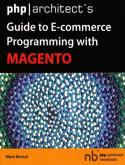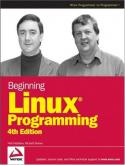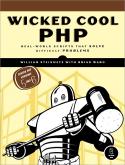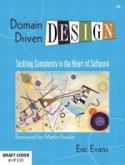Guide to E-Commerce Programming with Magento Ссылки





What you will learn from this book

Instead of starting at "Hello World," Wicked Cool PHP assumes that you're familiar with the language and jumps right into the good stuff. After you learn the FAQs of life-the most commonly wished for PHP scripts-you'll work your way through smart configuration options and the art of forms, all the way through to complex database-backed scripts.
Wicked Cool PHP contains a wide variety of scripts to process credit cards, check the validity of email addresses, template HTML, and serve dynamic images and text. The 76 easily implemented scripts will also teach you how to:
But it's not all fun and games: Security is a big concern when programming any web application. So you'll learn how to encrypt your confidential data, safeguard your passwords, and prevent common cross-site-scripting attacks. And you'll learn how to customize all of the scripts to fit your own needs.
Dynamic Web content doesn't have to be difficult. Learn the secrets of the craft from two experienced PHP developers with Wicked Cool PHP.

With proper training a skilled system designer can take a bad design and rework it into well-designed, robust code. In this book, Martin Fowler shows you where opportunities for refactoring typically can be found, and how to go about reworking a bad design into a good one. Each refactoring step is simple-seemingly too simple to be worth doing. Refactoring may involve moving a field from one class to another, or pulling some code out of a method to turn it into its own method, or even pushing some code up or down a hierarchy. While these individual steps may seem elementary, the cumulative effect of such small changes can radically improve the design. Refactoring is a proven way to prevent software decay.
In addition to discussing the various techniques of refactoring, the author provides a detailed catalog of more than seventy proven refactorings with helpful pointers that teach you when to apply them; step-by-step instructions for applying each refactoring; and an example illustrating how the refactoring works. The illustrative examples are written in Java, but the ideas are applicable to any object-oriented programming language.
In 1994, Design Patterns changed the landscape of object-oriented development by introducing classic solutions to recurring design problems. In 1999, Refactoring revolutionized design by introducing an effective process for improving code. With the highly anticipated Refactoring to Patterns, Joshua Kerievsky has changed our approach to design by forever uniting patterns with the evolutionary process of refactoring.
This book introduces the theory and practice of pattern-directed refactorings: sequences of low-level refactorings that allow designers to safely move designs to, towards, or away from pattern implementations. Using code from real-world projects, Kerievsky documents the thinking and steps underlying over two dozen pattern-based design transformations. Along the way he offers insights into pattern differences and how to implement patterns in the simplest possible ways.

The software development community widely acknowledges that domain modeling is central to software design. Through domain models, software developers are able to express rich functionality and translate it into a software implementation that truly serves the needs of its users. But despite its obvious importance, there are few practical resources that explain how to incorporate effective domain modeling into the software development process.
Domain-Driven Design fills that need. This is not a book about specific technologies. It offers readers a systematic approach to domain-driven design, presenting an extensive set of design best practices, experience-based techniques, and fundamental principles that facilitate the development of software projects facing complex domains. Intertwining design and development practice, this book incorporates numerous examples based on actual projects to illustrate the application of domain-driven design to real-world software development.
Readers learn how to use a domain model to make a complex development effort more focused and dynamic. A core of best practices and standard patterns provides a common language for the development team. A shift in emphasis--refactoring not just the code but the model underlying the code--in combination with the frequent iterations of Agile development leads to deeper insight into domains and enhanced communication between domain expert and programmer. Domain-Driven Design then builds on this foundation, and addresses modeling and design for complex systems and larger organizations.Specific topics covered include:
With this book in hand, object-oriented developers, system analysts, and designers will have the guidance they need to organize and focus their work, create rich and useful domain models, and leverage those models into quality, long-lasting software implementations.



This book is for web developers wanting to learn how to leverage the API in their own applications or how to create bespoke applications in Facebook. It will also appeal to Facebook users who are interested in using the API to develop their own programs. The code in the book is aimed at the beginner–to–intermediate level, so you don’t need to be a pro to use it, but some programming or web development experience is recommended.

